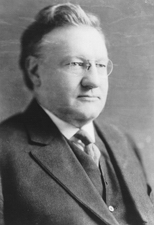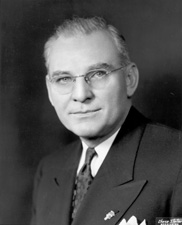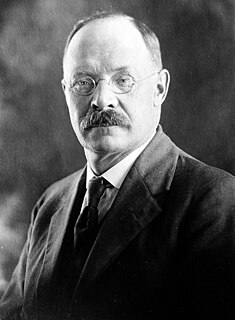
Henrik Shipstead was an American politician. He served in the United States Senate from March 4, 1923, to January 3, 1947, from the state of Minnesota in the 68th, 69th, 70th, 71st, 72nd, 73rd, 74th, 75th, 76th, 77th, 78th, and 79th Congresses. He served first as a member of the Minnesota Farmer-Labor Party from 1923 to 1941 and then as a Republican from 1941 to 1947.

The 1988 United States Senate elections was an election for the United States Senate in which, in spite of the Republican victory by George H. W. Bush in the presidential election, the Democrats gained a net of one seat in the Senate. Seven seats changed parties, with four incumbents being defeated. The Democratic majority in the Senate increased by one from 54/46 to 55/45.

The 1986 United States Senate elections was an election for the United States Senate in the middle of Ronald Reagan's second presidential term. The Republicans had to defend an unusually large number of freshman Senate incumbents who had been elected on President Ronald Reagan's coattails in 1980. Democrats won a net of eight seats, defeating seven freshman incumbents and regaining control of the Senate for the first time since January 1981. The party not controlling the presidency gained seats, as usually occurs in mid-term elections.

The 1978 United States Senate elections in the middle of Democratic President Jimmy Carter's term. Thirteen seats changed hands between parties. The Democrats at first lost a net of two seats to the Republicans, and then one more in a special election. Democrats nevertheless retained a 58-41 majority.

The 1976 United States Senate elections was an election for the United States Senate that coincided with Democratic Jimmy Carter's presidential election and the United States Bicentennial celebration. Although almost half of the seats decided in this election changed parties, Carter's narrow victory did not provide coattails for the Democrats, and the balance of the chamber remained the same.

The 1964 United States Senate elections coincided with the election of President Lyndon B. Johnson by an overwhelming majority, to a full term. His Democratic Party picked up a net two seats from the Republicans. As of 2019, this is the last time either party has had a two-thirds majority in the Senate, which would have hypothetically allowed the Senate Democrats to override a veto, convict and expel certain officials, or invoke cloture without any votes from Republicans. The Senate election coincided with Democratic gains in the House in the same year.

The 1950 United States Senate elections occurred in the middle of Harry S. Truman's second term as President. As with most 20th-century second-term mid-terms, the party out of the Presidency made significant gains. The Republican opposition made a net gain of five seats, taking advantage of the Democratic administration's declining popularity during the Cold War and the aftermath of the Recession of 1949. The Democrats held a narrow 49 to 47 seat majority after the election. This became the first time since 1932 that the Senate Majority Leader lost his seat and the only instance where the majority leader lost his seat while his party retained the majority.

The 1946 United States Senate elections were held November 5, 1946, in the middle of Democratic President Harry S. Truman's first term.

The United States Senate elections of 1938 occurred in the middle of Franklin D. Roosevelt's second term. This occurred six years after the Democratic landslide in the 1932 election, and so the opposition Republicans gained seven seats from the Democrats. However, the Democrats retained a commanding lead over the Republicans with more than two-thirds of the chamber.

The United States Senate elections of 1936 coincided with the reelection of President Franklin D. Roosevelt. The Great Depression continued and voters backed progressive candidates favoring Roosevelt's New Deal in races across the country. The Democrats gained 5 net seats during the election, and in combination with Democratic and Farmer–Labor interim appointments and the defection of George W. Norris from the Republican Party to become independent, the Republicans were reduced to 16 seats, the most lopsided Senate since Reconstruction.

The United States Senate elections of 1934 occurred in the middle of Democratic President Franklin D. Roosevelt's first term. In the middle of the Great Depression, voters strongly backed Roosevelt's New Deal and his allies in the Senate. The Democrats picked up a net of nine seats, giving them a supermajority. President Harry S. Truman was first elected to the U.S. Senate in the 1934 election. Truman would serve over a decade in the U.S. Senate, before becoming President Roosevelt's third Vice President, before succeeding to the presidency upon the death of President Roosevelt.

The United States Senate elections of 1930 occurred in the middle of Republican President Herbert Hoover's term. With the Great Depression beginning to take hold, Republican incumbents became unpopular, and Democrats picked up a net of eight seats, erasing the Republican gains from the previous election cycle. Republicans retained control of the U.S. Senate since Vice President Charles Curtis cast the tie-breaking vote. This was the first of four consecutive Senate elections in the Depression in which Democrats made enormous gains, achieving a cumulative pick-up of 34 seats.

The United States Senate elections of 1922 were elections that occurred in the middle of Republican President Warren G. Harding's term. With the Republicans divided between conservative and progressive factions, the Democrats gained six net seats from the Republicans while the Farmer-Labor party gained one. The Republicans retained their Senate majority.

Although the 17th Amendment was not passed until 1913, some states elected their Senators directly before its passage. Oregon pioneered direct election and experimented with different measures over several years until it succeeded in 1907. Soon after, Nebraska followed suit and laid the foundation for other states to adopt measures reflecting the people's will. By 1912, as many as 29 states elected senators either as nominees of their party's primary or in conjunction with a general election.

The 1920 Minnesota gubernatorial election took place on November 2, 1920. Republican Party of Minnesota candidate J. A. O. Preus defeated Independent challenger's Henrik Shipstead and the Mayor of St. Paul, Laurence C. Hodgson. Shipstead narrowly lost to Preus in the Republican primary of that year and challenged him in the general, beating the Democratic nominee but coming far short of winning the general.

The 1934 United States Senate election in Minnesota took place on November 6, 1934. Incumbent Farmer-Labor U.S. Senator Henrik Shipstead defeated former State Senator Nathaniel J. Holmberg of the Republican Party of Minnesota and U.S. Representative Einar Hoidale of the Minnesota Democratic Party to win a third term.

The 1946 United States Senate election in Minnesota took place on November 5, 1946. It was the first election to either of Minnesota's seats in the United States Senate held since the Minnesota Democratic Party and the Farmer-Labor Party of Minnesota merged in 1944, to form the Minnesota Democratic-Farmer-Labor Party. Incumbent U.S. Senator Henrik Shipstead was defeated in the Republican primary by Governor Edward John Thye, who went on to defeat DFL challenger Theodore Jorgenson in the general election.

The 1922 United States Senate election in Minnesota took place on November 7, 1922. Farmer-Labor challenger Henrik Shipstead defeated incumbent Republican U.S. Senator Frank B. Kellogg and Democratic challenger Anna Dickie Olesen.

The 1923 United States Senate special election in Minnesota took place on July 16, 1923. The election was held to fill, for the remainder of the unexpired term, the seat in the United States Senate left vacant by Republican U.S. Senator Knute Nelson, who died in office on April 28, 1923. State Senator Magnus Johnson of the Farmer-Labor Party of Minnesota defeated Governor J. A. O. Preus of the Republican Party of Minnesota, and State Senator James A. Carley of the Minnesota Democratic Party, which, together with Henrik Shipstead's victory in 1922, brought both of Minnesota's seats in the United States Senate into the hands of the Farmer-Labor Party for the first time in history.

The 1928 United States Senate election in Minnesota took place on November 6, 1928. Incumbent Farmer-Labor U.S. Senator Henrik Shipstead defeated his Republican challenger, former St. Paul mayor Arthur E. Nelson, to win a second term.






















